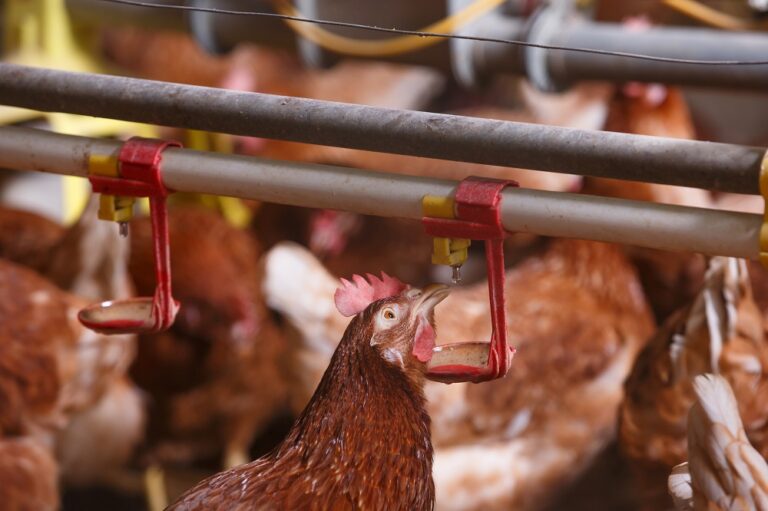Water management is an essential consideration in free-range layer flocks, as contaminants in the water or the wrong pH can have severe impacts on egg production.
For Jim Turner, poultry product manager at Wynnstay, the biggest water related threat to birds is the build-up of biofilm in the lines. “Biofilm is a slime-like mix of bacteria and algae, which usually starts growing at the end of the lines in spaces where water sits without flowing,” says Turner. “If left unchecked, the growth of biofilm moves back along the lines to where the birds are drinking from, and in a worst-case scenario can lead to blockages preventing birds’ access to water, causing chronic dehydration.
“In other scenarios, the birds take in the bacteria from the biofilm as they drink, which increases their risk of E. coli infections, which can in turn increase mortality and reduce egg production.
“If flocks experience disease outbreaks as a result of poor water hygiene this can raise the need for antibiotics, which we obviously want to avoid, to help meet industry antibiotic reduction targets,” adds Turner.
He explains the cost of doing something to prevent the build-up of biofilm is far less than the cost of doing nothing – although it is not possible to prevent, as any bird could introduce micro-organisms – and the best defence is to get the basic management practices correct.
FLUSHING WATERLINES
Turnaround presents the perfect opportunity to clean out waterlines and disinfect them ready for a new flock. “Between flocks, I’d recommending using a strong dose of a water sanitiser that includes hydrogen peroxide, letting it sit in the lines for up to six hours before flushing it out with fresh water. This helps eliminate any biofilm build-up from the previous flock, giving the new birds the best water hygiene from the moment they arrive,” Turner says.
He adds that consistent, regular water management and flushing the lines either weekly or fortnightly during a flock’s lifespan is equally important. “Ideally, the flush should include a small dose of a water sanitiser, to kill the bacteria without harming the birds, as well as flushing out the stagnant areas,” says Turner.
It is possible to be strategic with the timing of flushing. Turner explains that when lights switch off at night, birds tend to remain completely still and go to sleep. “You mostly see birds perching on top of the system, huddled around the waterlines.
The heat from the birds warms the water over night, creating the perfect conditions for the bacteria to grow,” he says. “Therefore, flushing first thing in the morning will have the maximum impact as it will remove the water when it’s at its warmest, replacing it with cool fresh water. The timing is especially important in the summer, when temperatures are generally warmer, as you see prime conditions for the bacteria to multiply and biofilm to build up quickly.”
ADDING ORGANIC ACIDS FOR GUT HEALTH
Introducing organic acids to the lines can also help with ongoing water management. While primary aim of introducing a blend of organic acids is to lower the birds’ gut pH for optimum digestion – they can also make the waterlines less habitable for bacteria. “Adding an organic acid blend offers a controlled way of lowering the pH of the water from between five and six, down to around pH four, the optimum level for layer gut health,” says Turner.
“This can have a knock-on effect, making the water line more hygienic as conditions become less favourable for the biofilm forming bacteria.”
Using organic acids to regulate pH requires an initial investment, as there is need for fitting a doser and also regular pH monitoring to ensure it is effective. However, once set up, the system can be automatic, and usually pays for itself quickly with better liveability and all-round flock performance. “Even with an organic acid system flushing remains the most effective technique to manage water hygiene,” he adds.


